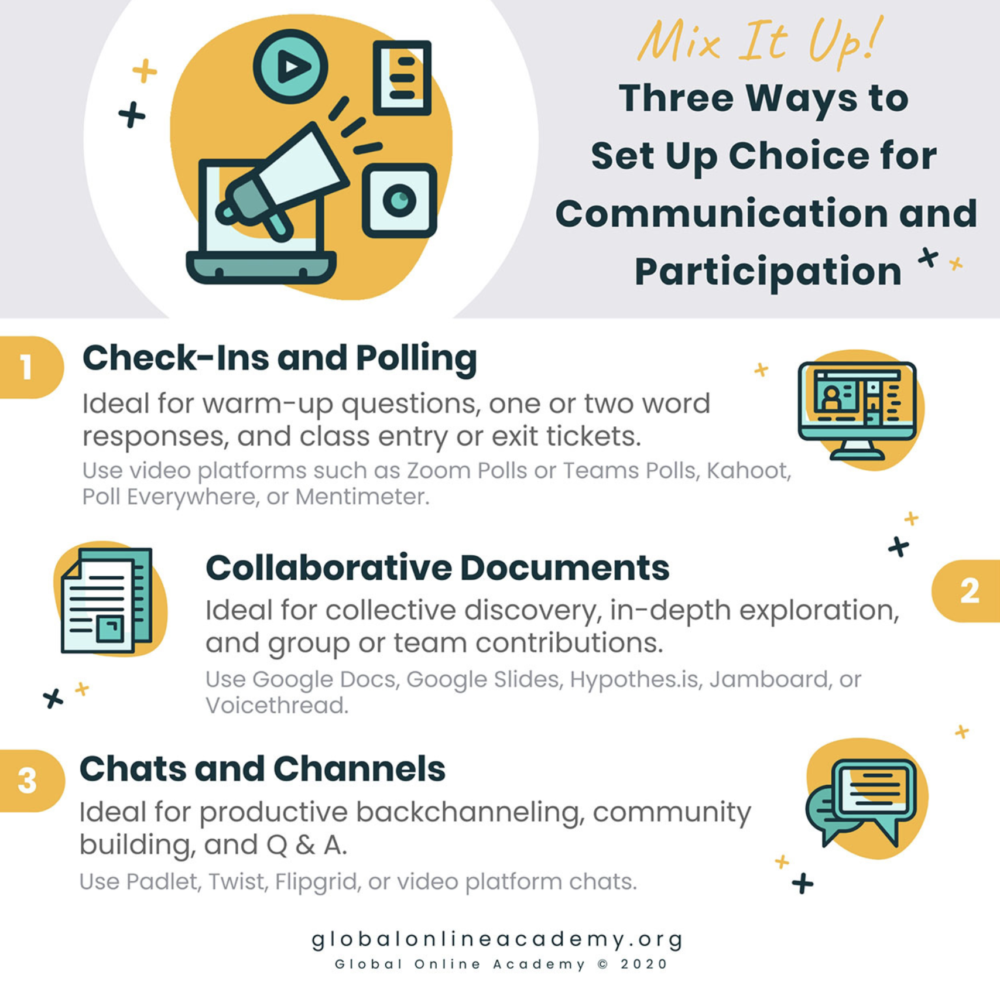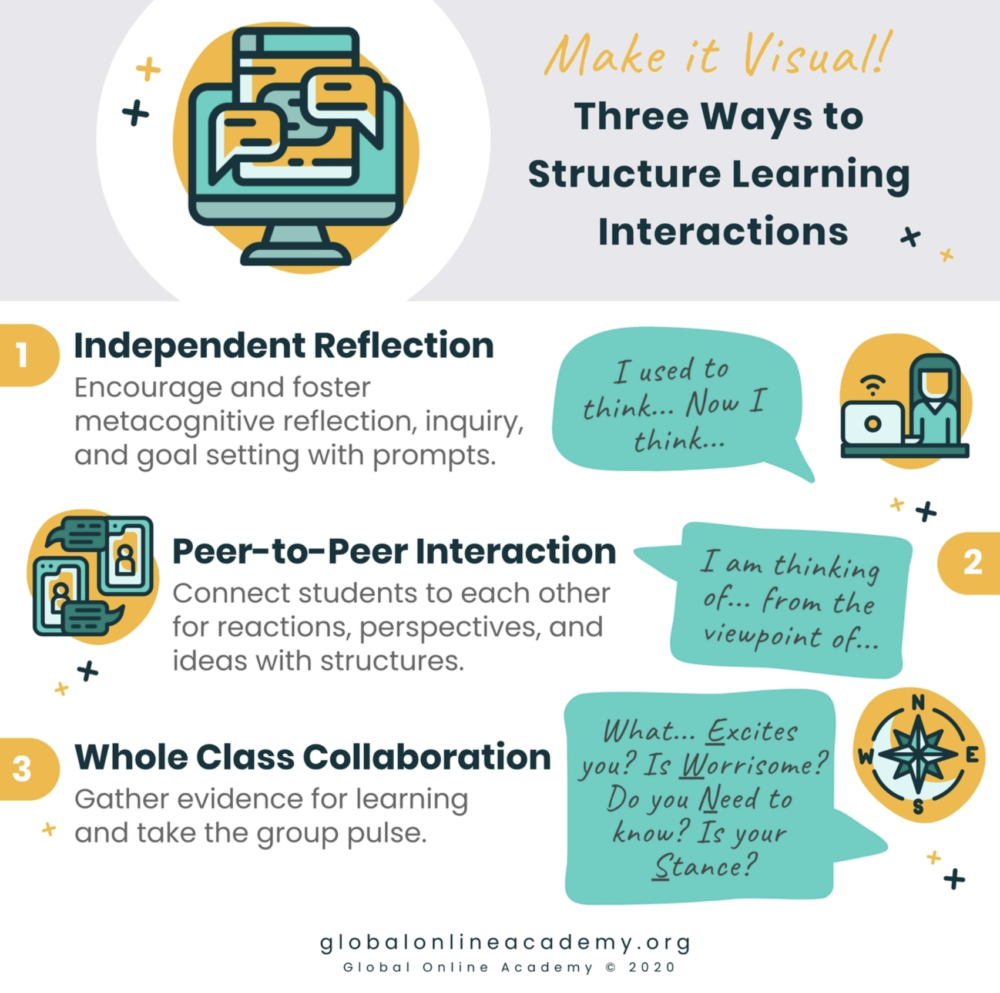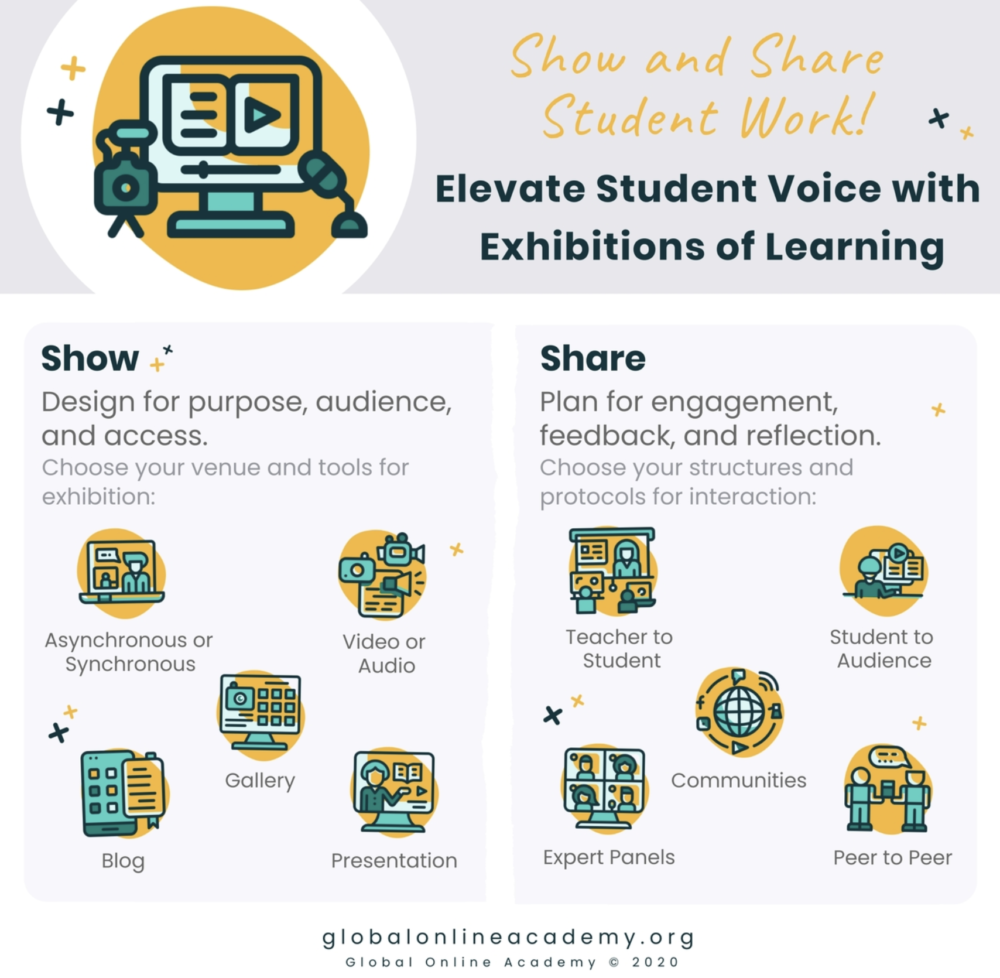Three Quick Wins for Engaging Learners in Online and Hybrid Learning
More than ever, students need structures for connection and collaboration. As many school communities navigate in-person, hybrid, and online models, teachers have been challenged to create pathways for student engagement that ensure access for all students.
Prioritizing engagement is culturally responsive instruction. When teachers make the shift from designing for students to show up to designing for each and every student to access learning, they make a vital shift in designing for equity. The strategies that ensure students can participate in conversations, collaborations, and reflections also help students take ownership for their learning. Well designed options for engagement elevate individual student voices and allow all learners to work towards the same learning outcomes on their own interest-driven pathways.
In October, GOA launched the first Quick Wins series, delivering a weekly email across three weeks offering educators resources, examples, and frameworks for proactively increasing student engagement. The Quick Wins series shared three foundational strategies to embed across a school year no matter where students are learning:
Strategy 1: Provide choices for participation by planning for check-ins
An open discussion may not invite all students to comfortably contribute. Ensure you hear from each student each day by planning for check-ins across contexts: warm up with a welcome check-in, gauge understanding mid-point in a lesson, or close conversations in a reflective exit ticket. Tools like Mentimeter, Kahoot, and Poll Everywhere offer students low-stakes opportunities to share both asynchronously and synchronously.

Strategy 2: Use visible thinking protocols to structure interactions
When designing for reflection, feedback, collaboration, or discussion, visible thinking structures offer clear scaffolds for participation. In “The Power of Protocols for Equity”, education leader Zaretta Hammond encourages, “Protocols can be a powerful equity tool. Leveraging protocols in our classroom can ensure equal participation in discussions that grow understanding and brain power for all students, as well as help them access their funds of knowledge, using practices from youth culture to ignite engagement.” Harvard’s Project Zero Thinking Routine Toolbox offers helpful starting points for visible thinking routines that apply across grade levels and content areas.

Strategy 3: Elevate voices through exhibitions of learning
Plan for students to show and share their learning beyond just the teacher. Exhibitions of learning are vehicles for students to get their work in front of authentic audiences and to engage in meaningful ways. Plan ahead for how an exhibition aligns to a summative experience: Identify the purpose, audience, and venue. And then determine how the audience will participate and how students will reflect. Tools like slide decks, Flipgrid, and websites offer a variety of exhibition venues that include all students.

Rethinking and diversifying how we design for engagement has lasting impacts for students in how they employ agency and experience learning. The three strategies shared above foster enduring metacognitive practices for students that transfer between contexts and beyond the classroom.
What will you apply back to your practice this week? Share what you’re trying on Twitter @GOAlearning and by using #goalearning. And continue your learning journey by exploring upcoming courses. Watch that space for the second Quick Wins series launching in early 2021. If you’re interested in programming for school-based teams, please visit our facilitation and consultation page and fill out a short inquiry form.
